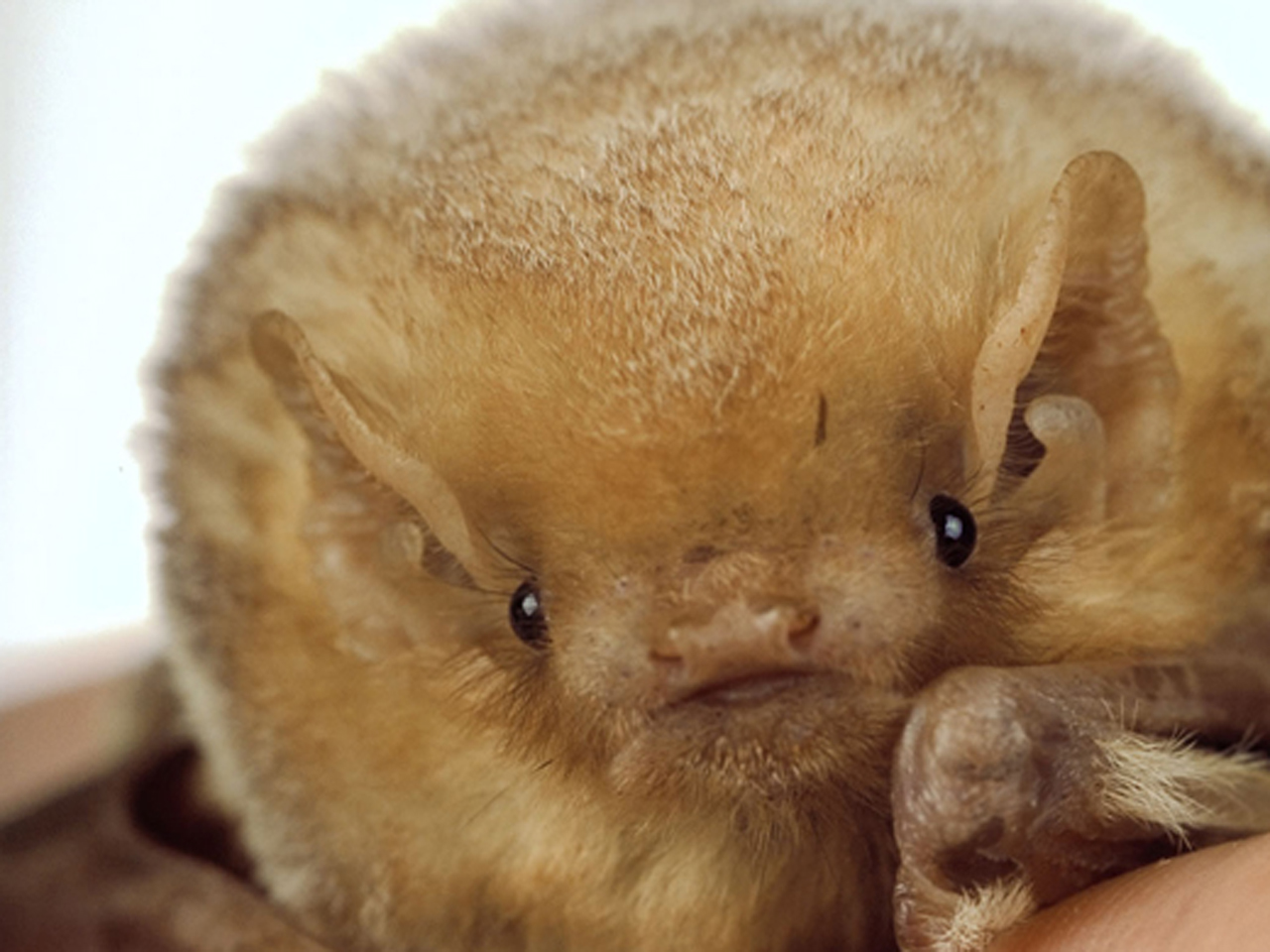What drew Angelo Capparella out to the wooded areas of the ParkLands Foundation’s nature preserves on a warm June night was something tough to spot, and impossible to hear. While Capparella has spent the last two decades researching birds and working toward their conservation, an unplanned event took this avian expert back to the study of his first winged subjects—bats that silently streak across the night.
“Way back when I was a graduate student doing expeditions to Peru, we would collect specimens of bats for the museum, but ever since I’ve been at Illinois State, I’ve worked with birds,” said Capparella, an associate professor of zoology who also coordinates the School of Biological Science’s conservation biology sequences. But in 2013, a new wind farm near Illinois State suddenly recorded a large amount of dead bats, a phenomenon that was repeated all over the country.
“This was something that no one predicted,” said Capparella. “Everyone had been worried about birds, but not about bats. No one understood why so many were dying.” Capparella worked with a graduate student through several theories that included the spinning blades creating localized low-pressure fronts that killed the bats by rupturing their lungs. “In the end, we found they were essentially getting whacked when they migrated” and came into contact with wind turbine blades whose tips are can spin over 100 miles per hour.
“How do you study bats? They are little things flying in the dark that you cannot see or hear.”
While not all species of bats migrate, Capparella said the ones that do come into the Midwest across broad fronts from Canada and the northern United States. “When they migrate, they do not echo-locate because they only use that when they are feeding or moving through forests. They are not adapted to anticipate there will suddenly be big, metal structures in their way,” he said.
Capparella, who also volunteers with the Prairie State Conservation Coalition, decided if scientists could learn more about the migration of bats, then they could provide wind farm companies schedules that would help them modify when turbines were operating at top speed. “The wind farm companies want to decrease these bat deaths, so they are trying to understand migration to mitigate the problem,” he said.
There was only one problem with providing the companies data on bat migration in the Midwest—there isn’t any.
“Bats are very difficult to study,” said Capparella. “They are nocturnal, and their vocalizations are above human hearing. So how do you study bats? They are little things flying in the dark that you cannot see or hear.” As opposed to physically netting the bats using what Capparella calls a “badminton net with a much smaller weave,” he and his new undergraduate research assistant, Madison Myers, use new technology called ultrasonic recorders, purchased with funds from the Dale Birkenholz Memorial Conservation Fund.
Throughout the month of June, when bat migration is suspected to be high, Capparella and Myers transect the nature preserve near the Mackinaw River, recording the sonic calls of bats as they hunt for insects in the preserve. “A lot of people might think, ‘Oh, this little lot of wooded area doesn’t do much to preserve nature,’” said Capparella of the Parklands 3,000 acres, “but for migrating birds—and probably bats—they are vital for stopover sites. Think of it like a rest area.”
The new technology, called an Echo Meter, records the noises of bats, and compares it to a database, letting researchers immediately identify a bat’s species. “My favorite time of the evening is at twilight, when the bats are beginning to forage. This is one of the only times the bats are visible,” said Myers, a junior from Mendota, Illinois. “Actually seeing the bats and picking up their sound waves on the Echo Meter is really exciting, almost like putting a face to the voice that we have been hearing.”
Once they have gathered the data, Capparella will work with Associate Professor of Geography John Kostelnick to help map possible migration routes. The studies will include a cross-section of Geographical Information Systems (GIS) and Genetic Algorithm Rule Prediction (GARP). “GARP can predict ecological niches or locations that can occur with birds, bats, or any mammals, really,” said Kostelnick, who added a niche for bats might be a forest canopy. The GARP software uses complex statistics to locate niches, and overlays them with GIS maps. “In simple terms, they tell us where we might expect to find the bats.”
Along with providing insights to wind farm developers, Capparella hopes a map of migration will help the overall bat population. “Bats are so important to the ecosystem because of eating pests and the like. They are really vital in the food web,” said Capparella, who noted diseases like the white nose fungus have been a severe hit to bat numbers in the U.S. “There have been real concerns about the future of bats in North America. If you want to conserve bats, you have to understand them.”




